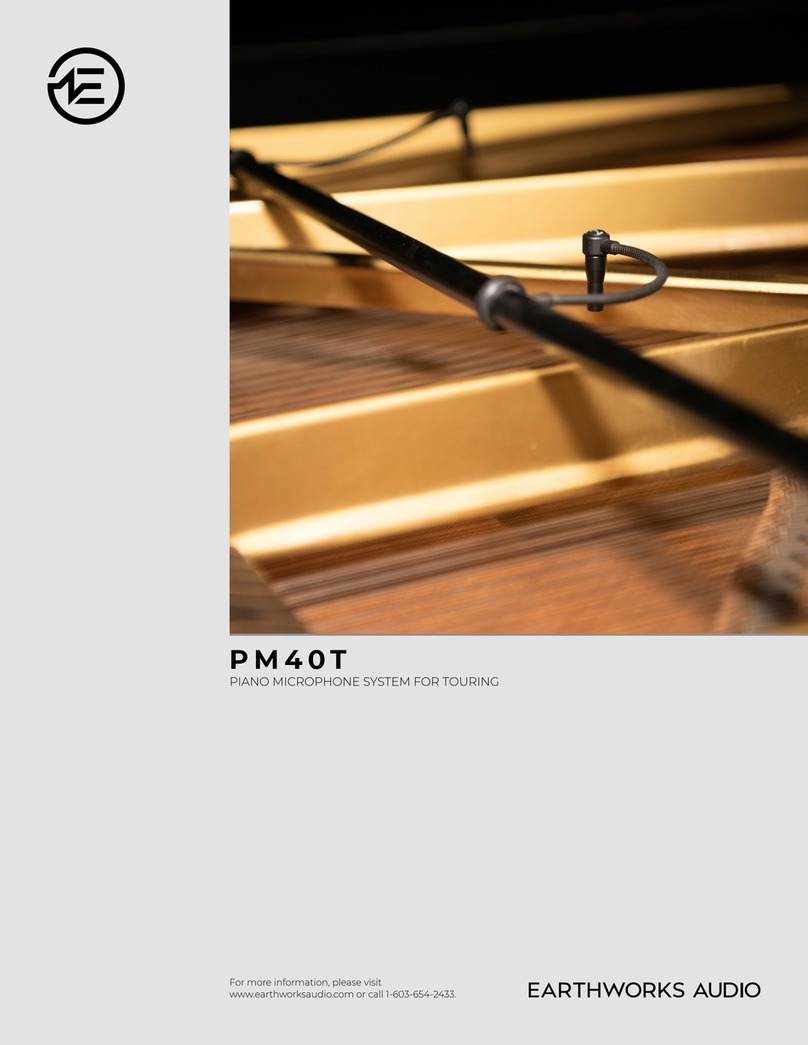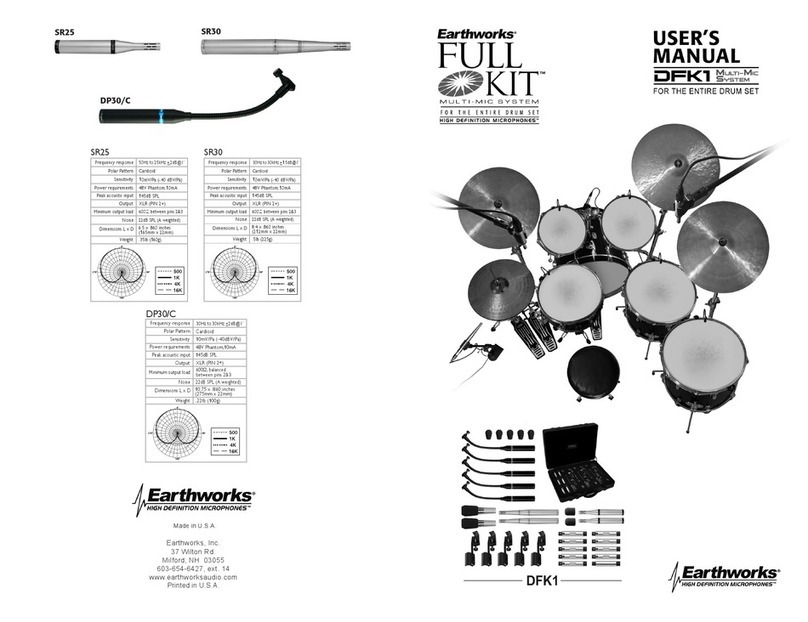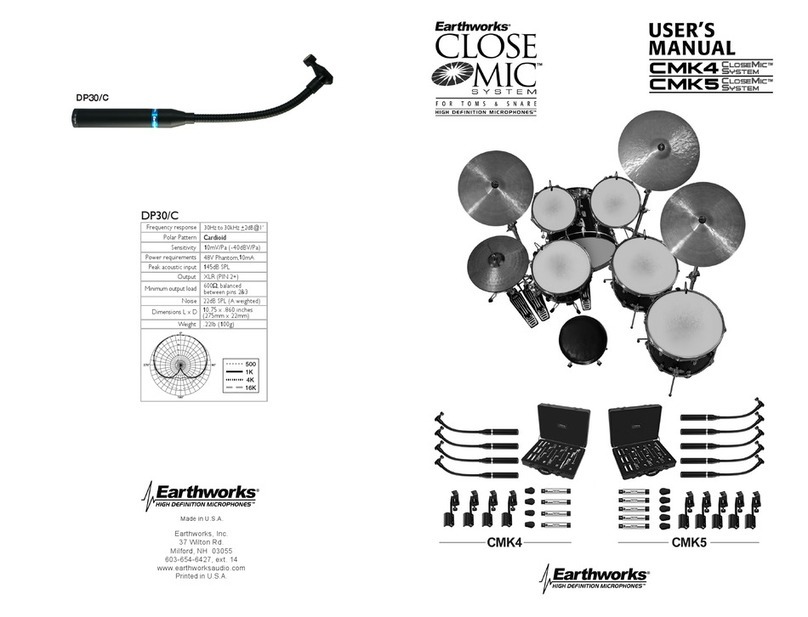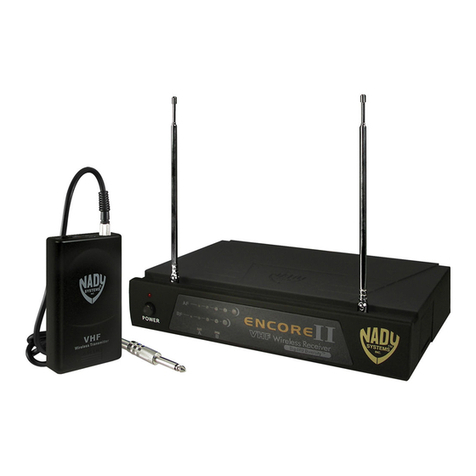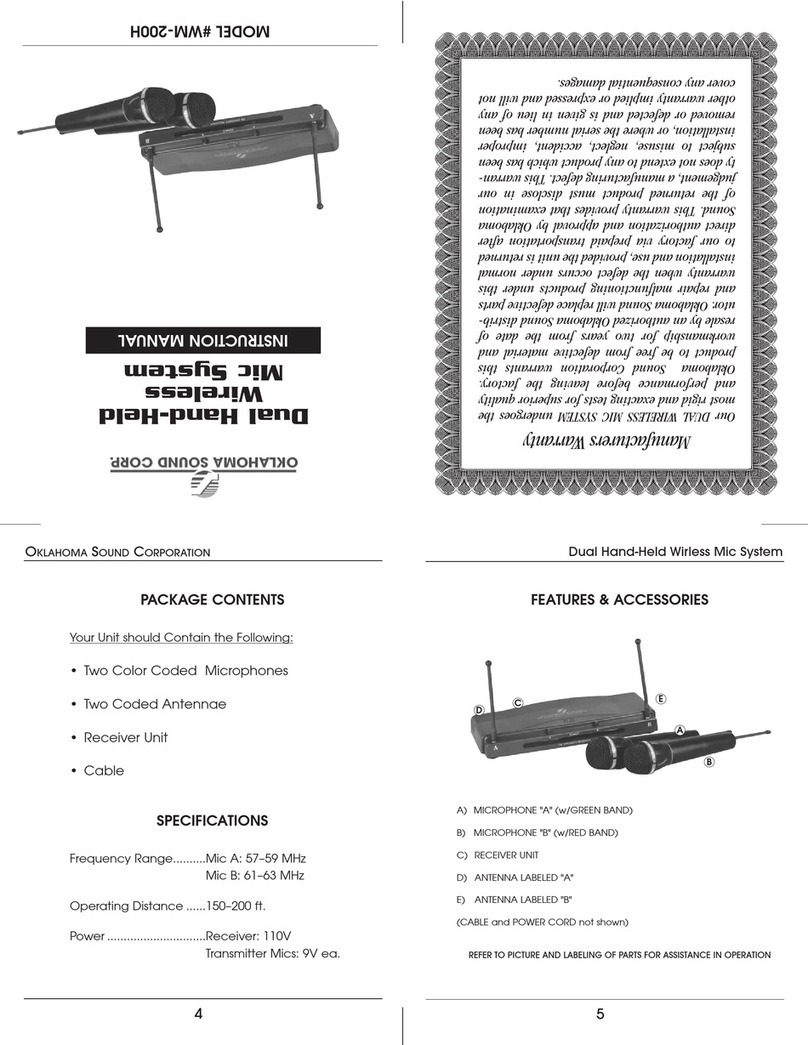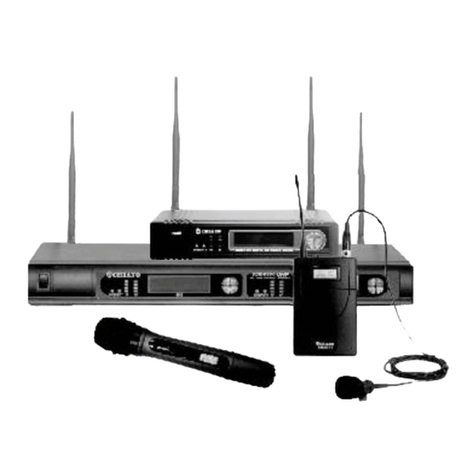
inside front cover
When miking groups or ensembles the Earthworks near-perfect polar response allows
placing the microphones much closer to the instruments or voices resulting in greater
detail in the sound and more gain-before-feedback.
Earthworks cardioid micro-
phones provide incredible re-
jection of sound from the rear
of the microphone. Notice in
Figure C that this dead area
of the microphone covers
180 degrees. Figure D shows
the way “not to” position the
microphone. Figure E shows
the “correct” way to position
the microphone and obtain
the greatest amount of rejec-
tion of sounds coming from
the rear of the microphone.
Following these guidelines
will provide incredible results.
You should be more than
pleased!
Figure A Usable area
with full frequency re-
sponse of conventional
cardioid microphones
BEFORE YOU START Guidelines for Positioning FW430 FlexWands
Earthworks near-perfect polar response may require some changes or adjustments in
your typical miking practices. Please read the manual to gain a full understanding of
the pick-up characteristics of Earthworks cardioid microphones.
Figure B Usable area with full
frequency response of Earth-
works cardioid microphones
Figure C Rear rejection area of
Earthworks cardioid microphones
There is a dramatic difference in
the pick-up area with full frequency
response (i.e. no signicant high
frequency loss) between a conven-
tional cardioid microphone and an
Earthworks cardioid microphone with
near-perfect polar response. These
differences can be seen in comparing
Figures A and B. So, when using an
Earthworks cardioid microphone you
must think “wider” when you position
your microphones. The Earthworks
cardioid mics have a much greater
reach on the sides than conventional
cardioid microphones.
Figure E CORRECT
maximum isolation from
the band
Figure D INCORRECT poor
isolation from the band
Congratulations on your purchase of the innovative Earthworks High Deni-
tion Microphone™ FW430 FlexWand™ System. We know you will be thrilled
with the results you achieve using the FlexWand™ System for both live per-
formance and recording.
Enclosed with your Earthworks FW430 FlexWand™System:
FlexWand™Models FW430 & FW430/HC with cast iron base, or
FW430TPB & FW430/HC-TPB with tripod base
1 – FlexWand™stand/wand section *
1 – Microphone windscreen *
1 – Base for stand/wand section (either cast iron metal or tri-
pod base depending on model) *
1 – User’s Manual for FlexWand™System
* (If you purchased a matched pair of FlexWands, you will receive two each of the
items indicated above with an asterisk.)
THE FLEXWAND™ SYSTEM
You have just purchased an Earthworks High Denition Microphone™ that is incor-
porated in the FlexWand™ System. The FlexWand™ System is a totally new concept
in microphones. It is a combination of a High Denition Microphone™ and a low
prole microphone stand and boom as a single unit. It allows the microphone head
to be positioned as high as 4.7 feet and as low as 10 inches from the oor or any-
where in between using the tripod base. Using the cast iron base (which is 4 inches
lower) changes the maximum height to 4.45 feet and minimum height to 6 inches.
Best of all there are no visible wires or cables above oor level. Visually it is low pro-
le, smooth, sleek and clean. The FlexWand™ is the ideal solution for applications
where the utmost in sound quality and a low prole is required.
The FlexWand™ is ideal for miking a variety of applications such as acoustic in-
struments and ensembles, amplied instruments and vocal solos. Now you
don’t have to nd a microphone, attach the mic clip to the stand and then dress
the cable around the stand. Just pick up the FlexWand™, position it and plug
the mic cable into the base. You are done! Best of all it is neat and clean visu-
ally with no unsightly microphone cable wrapped around the stand and boom.
And, it sounds spectacular!
1
FOR ASSEMBLY INFORMATION SEE PAGES 11-16



